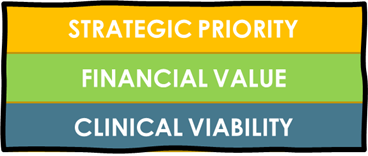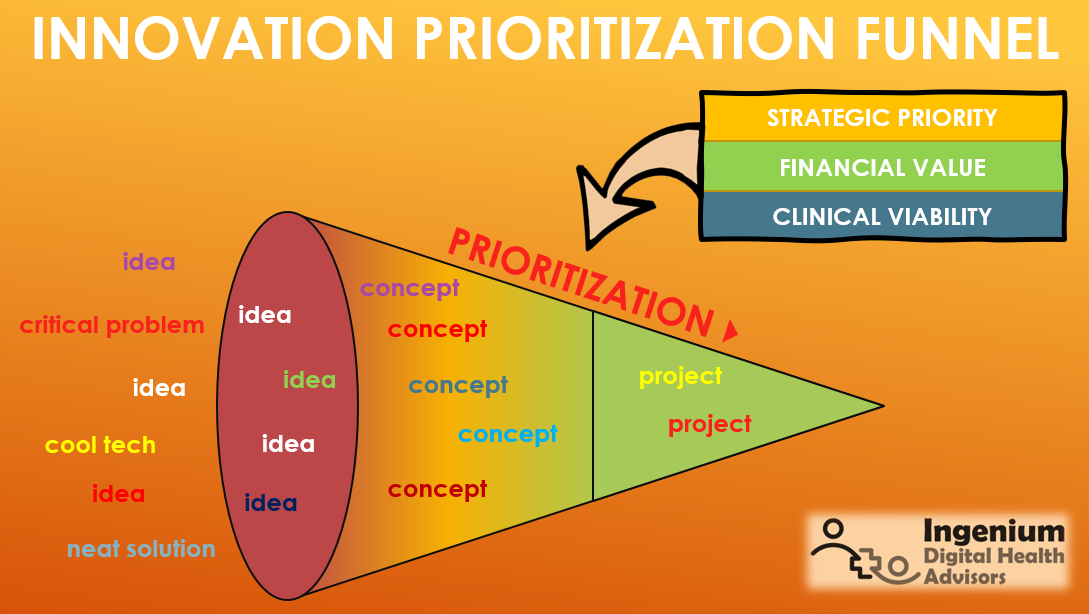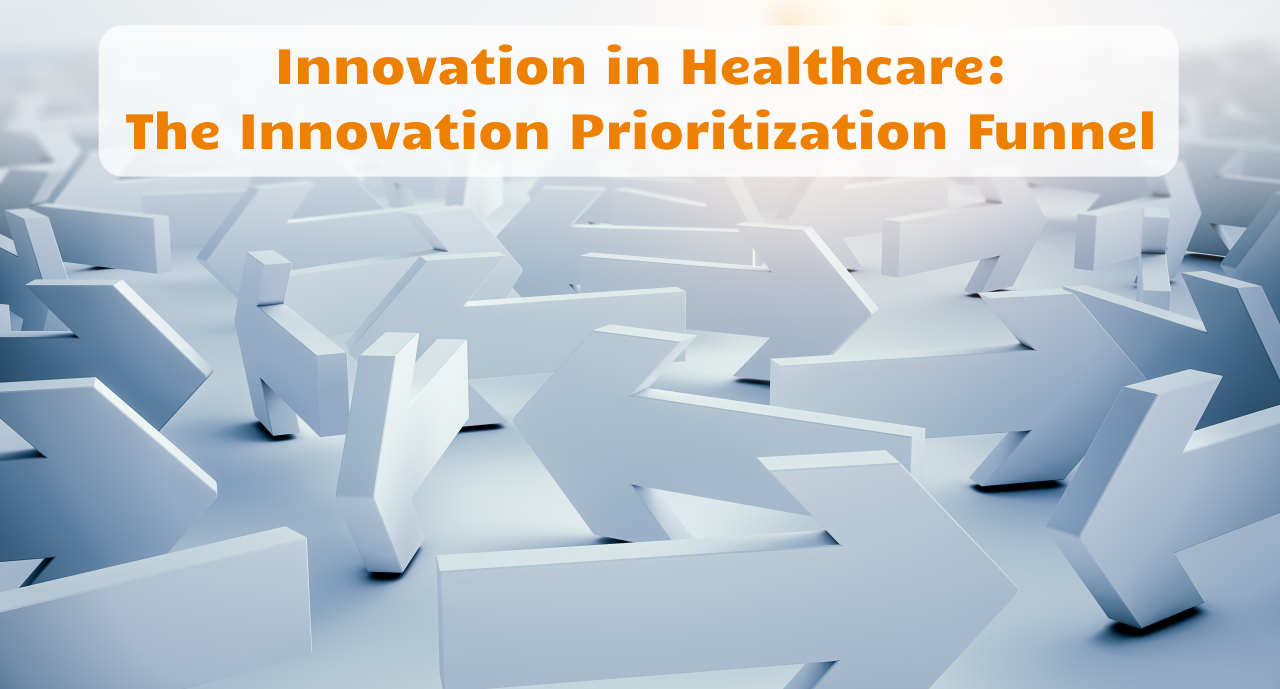Without the adoption of innovation virtually no business will be able to survive, and even in healthcare it will become increasingly difficult to get by with “business as usual”, just by optimizing the old systems and processes.
Yet once an organization has decided to invest time and staff and money into innovation, the question is: Where to start?
Over the past 11 years, the venture capital industry has invested almost $100B (yes, one-hundred billion dollars) into digital health. Aside from startups creating their own care delivery services, there are now hundreds of innovative digital health solutions waiting to be integrated by the current healthcare delivery organizations.
Which again brings up the question: Where to start?
Problem-Driven Solution Selection
In my last article on “Innovation in Healthcare” I focused on the overall theme of accelerating innovation adoption in healthcare. The simple process for innovation adoption includes 4 steps:
- Define the Problem.
- Discover the Innovation.
- Develop the Integration.
- Deploy the Solution.
This is very different from how most organizations approach innovation selection. Usually it’s “the tail wagging the dog”: a cool idea, a seemingly valuable solution, a buzzword pleaser (like “AI”), or a super nice sales person with a very compelling value proposition.
But in mature organizations, time and money are actually not resources, but priorities. As the saying goes, “you always have time for the things you put first”. And I’ve often found that “if there’s value to be had, there’s money to be found.”
So if the selection of digital innovation cannot be simply based on its “sex appeal”, the first challenge becomes: How do you prioritize?
As the process above describes, the first task is to actually identify and describe the urgent, pervasive, costly problem that a solution needs to address. The problem should arise from the organization’s strategic plan and describe a disconnect between the current reality and the desired future, described in one or more strategic objectives.
The first level of prioritization thus occurs in the prioritization of problems that the organization aims to solve. Without a clear definition of the problem and a clear understanding of its relative priority to other problems, regardless of the brilliance of the digital health innovation, the solution will most likely fail.
The 3 Lenses of Digital Health Innovation Value
Over the years, I’ve worked with healthcare organizations to decide which telehealth services to put on their telehealth roadmap and in what order. The same principles of selection and prioritization apply to digital health innovation, albeit on a more diverse scale.



- A Strategic Case
- A Business Case
- A Clinical Case
The Strategic Case describes how the proposed innovation will advance one or more of the organization’s strategic objectives. Most Telehealth services, for example, have a big impact on Access, People, and Growth.
The Business Case describes not only the size of the required investment, but also the ongoing operational cost and the business model to achieve a positive return on investment or otherwise ensure the financial sustainability of the proposed service.
And last, but not least, the Clinical Case describes whether the innovative solution is medically sound. Without the buy-in of clinicians, most digital health innovations do not stand a chance of being sustainably adopted. Questions to address in the clinical case include the efficacy of the innovation on diagnosis or treatment, along with the efficiency and usability for clinicians, among other aspects.
From an executive leadership perspective, an investment in a particular digital health innovation should thus be a joint decision by the CEO (strategic case), the CFO, COO, and CTO (business case), and the CMO and CNO (clinical case).
Funneling Digital Health Innovation



It is human nature to be fascinated by new concepts, dazzling innovation, and cool technology. Especially when the media is full of stories about the adoption of digital health tech and AI-driven solutions.
An organization should therefore have a way to capture and analyze the various ideas, cool tech, neat solutions, or critical problems, as shown on the left side of the funnel. This repository of potential solutions can accelerate the second step in our 4-step process from above: the discovery of the most applicable innovation to best solve the selected problem.
Once a problem has been defined, and one or more applicable innovations have been identified, the problem and innovations can be packaged together into “solution concepts”. Each solution concept is then refined by building the strategic, business, and clinical case to enable the relatively simple prioritization of the concepts.
The approved or “next in line” solution concepts are then developed into projects, therefore ending the prioritization funnel.
From Concept to Implementation
In order to survive the economic changes and competitive pressures, healthcare organizations must quickly invest in their internal capabilities to select innovative solutions in days, develop them into solutions in weeks, and deploy them within a few months.
We’ll continue this series in our next article on Innovation in Healthcare: From Idea to Validation.
How does your organization select innovative digital health solutions? Is the tail wagging the dog (or the sales person buying pizza), or is your organization’s process objective and problem driven?








To receive articles like these in your Inbox every week, you can subscribe to Christian’s Telehealth Tuesday Newsletter.
Christian Milaster and his team optimize Telehealth Services for health systems and physician practices. Christian is the Founder and President of Ingenium Digital Health Advisors where he and his expert consortium partner with healthcare leaders to enable the delivery of extraordinary care.
Contact Christian by phone or text at 657-464-3648, via email, or video chat.






